|
The Experimenting With ... Series
The six books in the series provide interesting and engaging activities organized under the titles of Electricity, Forces, Energy, Light and Colour, Physical and Chemical Changes, Air, and Simple Machines.
The experiments invite students to "Try This Yourself" and go on to give short explanations of the key principles covered within that experiment. Gore most commonly outlines the experiments with the headings "What You Need," "What To Do" and "Questions." Most of the experiments covered are simple to organize and even when they sound more complex, such as "Try This Yourself! Balancing Torques" in Experimenting With Simple Machines, they use common and readily available items. Black and white photos and easy-to-follow illustrations provide additional information for the teacher Teachers will appreciate the emphasis on safety in all of these books. Reproducible pages outline safety guidelines for students. Protective clothing, safety precautions and cleanup are addressed in points form and a safety icon appears throughout the books when a potential danger exists from the experiment. Perhaps the only drawback of the series stems from the fact that it has been developed to meet the pan-Canadian science learning outcomes rather than specifically to meet the Ontario requirements. However, the differences are subtle and these books are clearly intended to be used as one resource among many to meet the learning objectives of the teacher's own units of study. By providing students with concrete, hands-on experience, the variety of activities contained in these books will bring interest and excitement into any elementary classroom. Further, they will enable students to practise the skills necessary to meet the expectations of the science and technology curriculum of Ontario. Experimenting With ... Air, Electricity, Energy, Forces, Light and Colour, Physical and Chemical Changes, Simple Machines; Toronto, 2000; Trifolium Books Inc.; softcover, $10.00 per book; 416-483-7211; e-mail: trifoliu@ican.net Experimenting With: Air ISBN 1-55244-042-7; Electricity ISBN 1-55244-040-0; Energy ISBN 1-55244-044-3; Forces ISBN 1-55244-032-X; Light and Colour ISBN 1-55244-036-2; Physical and Chemical Changes ISBN 1-55244-034-6 David Squarzolo is a special education consultant with the Rainbow District School Board. The Spelling Skills Handbook for the Word Wise By Jenny and John
Barwick
"Good spellers develop their own tricks to remember words they find hard to spell." After an explanation of what makes a good speller, this handbook of about 100 pages goes on with an excellent chapter on spelling strategies. Most will be familiar and already in use by teachers. But the list of strategies such as chunking, mnemonics (the principal is my pal, a piece of pie, an island is land, loose tooth) and spelling words the way they are correctly pronounced (gov ern ment, Wed nes day) will be very helpful tools to students. The reader is also reminded that asking for help and using a dictionary are acceptable spelling strategies. Chapters on spelling rules about plural nouns, i before e except after c, silent letters, homophones, and word families are all included. As an elementary classroom teacher I found this handbook to be informative reading. It needs to be readily available to students who are struggling with spelling. The Spelling Skills Handbook for the Word Wise, Markham, 1999; ISBN 1-55138-118-4; soft-cover, 111 pages, $14.95; Pembroke Publishers; Phone: 905-477-0650; Fax: 905-477-3691 Donna Moorhead teaches Grade 5 at J. Charbonneau Public School in Arnprior. Elementary Social Studies -A Practical Approach to Teaching and Learning By Ian Wright
Ian Wright's fifth edition of Elementary Social Studies - A practical approach to teaching and learning is a combination of theoretical and practical material. The author takes you step-by-step through the process and rationale behind a social studies program, as well as precisely how to go about planning a unit. This book can be put to use both by teachers new to the profession and by seasoned veterans. It is a comprehensive guide to understanding the practice of teaching social studies. Wright begins with an examination of the definition and history of social studies, which was introduced as a school subject in Ontario in 1937. Programs have grown from activity-oriented curriculum to teaching students how to "think and act like historians, geographers and political scientists." The second section discusses empirical and conceptual issues, and revisits statistical methodology and the use of concrete activities to teach these concepts. Wright also discusses the development of a unit plan and the assessment of a student's understanding of a social studies topic. Elementary Social Studies - A Practical Approach to Teaching and Learning, Toronto, 2001; ISBN 0-13-086365-3; softcover, 328 pages, $47.95, Pearson Education Canada Inc., 1-800-567-3800 Josephine Scavuzzo teaches at White Haven Junior Public School, Toronto District School Board. Hearts and Minds: A Public School Miracle By Sandra Dean
Dean, who refers to herself as "Mother Bird", focuses on her initiatives to build the school's academic and social reputation. Although the events at South Simcoe Public School occurred in the last 10 years, they reflect the possibilities of a different political and educational environment. Ironically, the "public school miracle" which Dean championed and was the subject of much national and international acclaim was a victim of school closures and budget realignments in 1998. Hearts and Minds: A Public School Miracle, Toronto, 2000; ISBN 0-670-88982-2; hardcover, 245 pages, $33; Viking, Penguin Books of Canada; 416-925-2249; e-mail: service@penguin.ca Reviewed by Rick Chambers, who is a program officer in the College's Professional Affairs Department. Children
Today by Grace J. Craig, Marguerite D. Kermis & Nancy L. Digdon
Students interested in pursuing a career in a child-related discipline such as nursing, education, speech pathology or psychology would find this resource invaluable. The authors strive to provide a thought-provoking introduction to contemporary child development research and theory. Application boxes have been formulated that highlight key areas of interest for specific disciplines. A unique feature of Children Today is the link to a companion web site. The site offers online reviews where students can test their chapter comprehension through a series of self-tests. Visit www.pearsoned.ca/craig for a sampling of the multimedia possibilities of this resource that easily promotes the integration of technology into the classroom. Children Today was a pleasure to read and review. It is an excellent example of an interactive, innovative and refreshing resource that would appeal to educators and students alike. Children Today, Second Canadian Edition, Toronto, 2001; ISBN 0-13-087003-X; softcover, 588 pages, $77.95; Pearson Education Canada Inc.; 1-800-567-3800 Reviewed by Karin Bergin Payette, a qualified Primary/Junior teacher currently working as a public health nurse in the child health school program at Perth District Health Unit in Stratford. The Great
Peace
Teachers gain background knowledge and information for successful teaching of Native Studies. Students are kept interested and motivated throughout the program by being allowed to use technology as both a learning and a research tool. The major outcome of this learning experience for the student will be a greater understanding of and respect for Native peoples. The Great Peace; CD-ROM; Working World Training Centre, 188 Mohawk Street, Brantford ON N3S 2X2; 519-753-1111; fax: 519-753-2515; web site: www.greatpeace.org Reviewed by Majella Atkinson, who teaches Grades 5 and 6 at Pope Pius X School in Toronto. By Carol Lipson
The lyrics cover curriculum expectations from various grades. For example, the song On My Map covers expectations in Grades 1-4 mapping skills and introduces terms such as compass, globe, parallel lines, latitude and longitude. With titles such as Middle Ages, Canadian Citizen and Can You Name the Six Parts of an Experiment? it is easy to see what curriculum expectations are covered. Kids are sure to love the songs because of the combination of rap and song, the simple melodies and the interesting use of instrumentation, which all contribute to a fresh, Canadian sound. If You Try and Imagine, Q Records, 2000. CD, $14.99; Available in local record stores, from Indigo Books or from www.indipool.com/carollipson. Reviewed by Katherine Miles, a Grade 1 teacher at Village Union Public School in Courtice. By Design: Technology Exploration & Integration
The book supplies 40 different technology projects for students, most of which can be completed in a regular classroom. By Design can help both experienced and inexperienced teachers familiarize themselves and their students with design and technology. It is definitely a worthwhile read. By Design: Technology Exploration & Integration; Toronto, 1996; ISBN 1-895579-78-3; softcover, $39.95; Trifolium Books; 416-483-7211; e-mail: trifoliu@ican.net Reviewed by Anne Lefebvre, who teaches at Eganville and District Public School. Learning on the Information Highway: Learner's Guide to the Technologies Office of Learning Technologies, Human Resources Development Canada
However, several are costly in terms of equipment requirements and operational expenses. The guide details what the participant needs to know and be able to do in order to use each technology successfully. The guide uses everyday language with lots of tips provided in the margins throughout the book. The content is very practical in nature and includes simple but useful information. Learning on the Information Highway: Learner's Guide to the Technologies provides the reader with sufficient information to make an informed selection of a technology delivery method and to be successful using the technology. Learning on the Information Highway: Learner's Guide to the Technologies, Montrťal, 1998; ISBN 2-89461-255-9; softcover, $20.95; CheneliŤre/McGraw-Hill; 514-273-1066, e-mail: chene@dlcmcgrawhill.ca Reviewed by Audrey Cartile, who is a program officer in the College's Professional Affairs Department. The materials we review are available for loan to members through the Margaret Wilson Library. Visit www.oct.ca'Library |
||
|
|
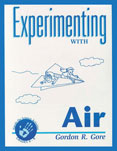
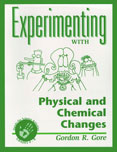 In
a continued quest for materials that are affordable and helpful, teachers of
science and technology in Grades 4 to 8 may find the Experimenting With ...
series of hands-on science
activities by Gordon R. Gore encourages student involvement in the science
class.
In
a continued quest for materials that are affordable and helpful, teachers of
science and technology in Grades 4 to 8 may find the Experimenting With ...
series of hands-on science
activities by Gordon R. Gore encourages student involvement in the science
class. 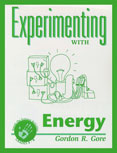 These books present a variety of
experiments for the classroom or laboratory and each book is organized into
sections which resemble some of the topics of the strands
from the curriculum. In
addition, each book has a "Test Your Knowledge" section that
draws together all
of the topics covered into a summative test and/or activity.
These books present a variety of
experiments for the classroom or laboratory and each book is organized into
sections which resemble some of the topics of the strands
from the curriculum. In
addition, each book has a "Test Your Knowledge" section that
draws together all
of the topics covered into a summative test and/or activity. 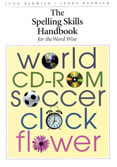 "Wotz
the yoose of speling?" asks the introduction to this handbook.
Written for students, parents and teachers, this is an easy read and
includes many illustrations which may help to attract the attention of the
student reader, beginning about Grade 4 or 5.
"Wotz
the yoose of speling?" asks the introduction to this handbook.
Written for students, parents and teachers, this is an easy read and
includes many illustrations which may help to attract the attention of the
student reader, beginning about Grade 4 or 5.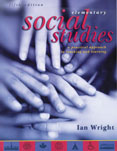
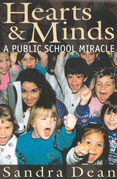 Sandra
Dean's book, Hearts and Minds, is the story of how the author, a
principal, through her own hard work and unrelenting leadership, gave an
elementary school in a downtown Oshawa neighbourhood the opportunity to
shine in its community.
Sandra
Dean's book, Hearts and Minds, is the story of how the author, a
principal, through her own hard work and unrelenting leadership, gave an
elementary school in a downtown Oshawa neighbourhood the opportunity to
shine in its community. 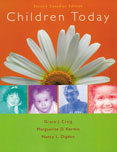 Children
Today is a clearly written and comprehensive text that outlines the study
of child development throughout the life cycle. It offers secondary
educators a resource that genuinely complements Ontario's senior level
Social Science & Humanities curriculum.
Children
Today is a clearly written and comprehensive text that outlines the study
of child development throughout the life cycle. It offers secondary
educators a resource that genuinely complements Ontario's senior level
Social Science & Humanities curriculum.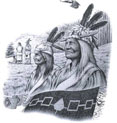 The
Great Peace ... The Gathering of Good Minds is a unique educational resource
that provides insight for both educators and learners on the history,
culture, spirituality and values of the Iroquoian people, as told by their
own people.
The
Great Peace ... The Gathering of Good Minds is a unique educational resource
that provides insight for both educators and learners on the history,
culture, spirituality and values of the Iroquoian people, as told by their
own people.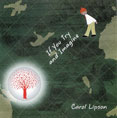 Have
you ever thought of motivating your students' interests in social
studies and science through music? With Carol Lipson's CD, If You Try
and Imagine, you can get students from Grades 1-6 involved in these and
other subjects through fun, catchy music.
Have
you ever thought of motivating your students' interests in social
studies and science through music? With Carol Lipson's CD, If You Try
and Imagine, you can get students from Grades 1-6 involved in these and
other subjects through fun, catchy music.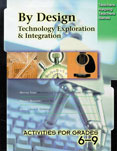 This
book - written by a group of Toronto teachers - helps put current
theories about technology education into practice. By Design incorporates
many of the same theories as the current curriculum, with a focus on a
problem-solving approach which emphasizes real-life applications.
This
book - written by a group of Toronto teachers - helps put current
theories about technology education into practice. By Design incorporates
many of the same theories as the current curriculum, with a focus on a
problem-solving approach which emphasizes real-life applications.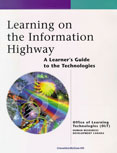 This
is an excellent user's guide - available in both official languages
- for anyone considering enrolling in or teaching a distance/open
course. The various distance learning technologies free participants of
the constraints of time and place.
This
is an excellent user's guide - available in both official languages
- for anyone considering enrolling in or teaching a distance/open
course. The various distance learning technologies free participants of
the constraints of time and place.